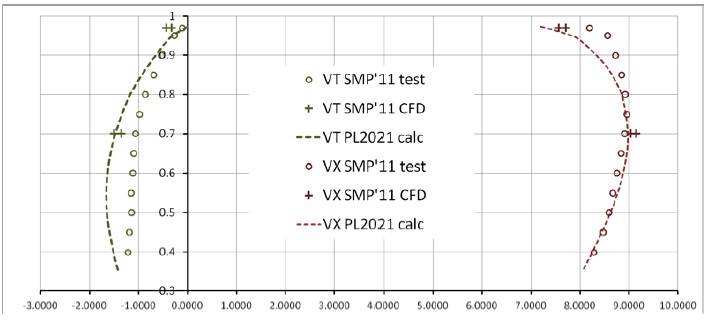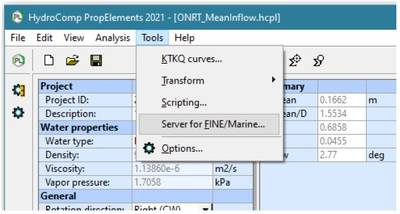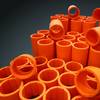HydroComp Updates PropElements 2021
Development in 2021 for HydroComp PropElements offers new features across the range of applications, including improved wake-adapted propeller design and analysis.
PropElements + FINE/Marine coupling
User testing is underway for the new coupling of HydroComp PropElements with NUMECA’s FINE/Marine CFD software. One of the challenges of full self-propulsion analysis with CFD is the computational load required to model the propeller within the 3D space. When coupled with FINE/Marine as a higher-order actuator disk replacement, PropElements calculates velocity fields and propeller body forces for the wake field, offering a significantly improved model of propeller performance for self-propulsion simulation at a fraction of the computational cost of full “sliding grid” 3D analysis.
Results of total axial and tangential velocities for the PPTC benchmark from SMP’11 are shown below (this is for a reference plane 20% diameter aft of the propeller plane). Markers are for test data with dashed lines the PropElements prediction. The report also included CFD predictions from multiple participants for the 0.70 and 0.97 radii, with results (for the mean 90%) shown by the error band markers in the plot. You can note that PropElements very closely matched the CFD predictions. This is a foundational piece of the upcoming contra-rotating propeller analysis module under development for 2022.
 (Image: HydroComp)
(Image: HydroComp)
Preliminary prediction of properties for noise and vibration assessment
New for 2021 are prediction of various properties for follow-on noise and vibration analysis. These properties are included in the performance and strength calculations, and can be generated for output using simple scripts. Parameters that are calculated include key frequencies, including shaft and blade pass; entrained water properties, including wetted added mass and moment of inertia; tip vortex parameters, including inception cavitation number, resonance frequency, and core diameter; and singing parameters, including estimation of the blade natural frequency and the radial exciting “vortex street” frequencies.
Other enhancements include automatic estimation of ideal angle for imported geometric data and improved influence of the hub’s effect on induced velocities













